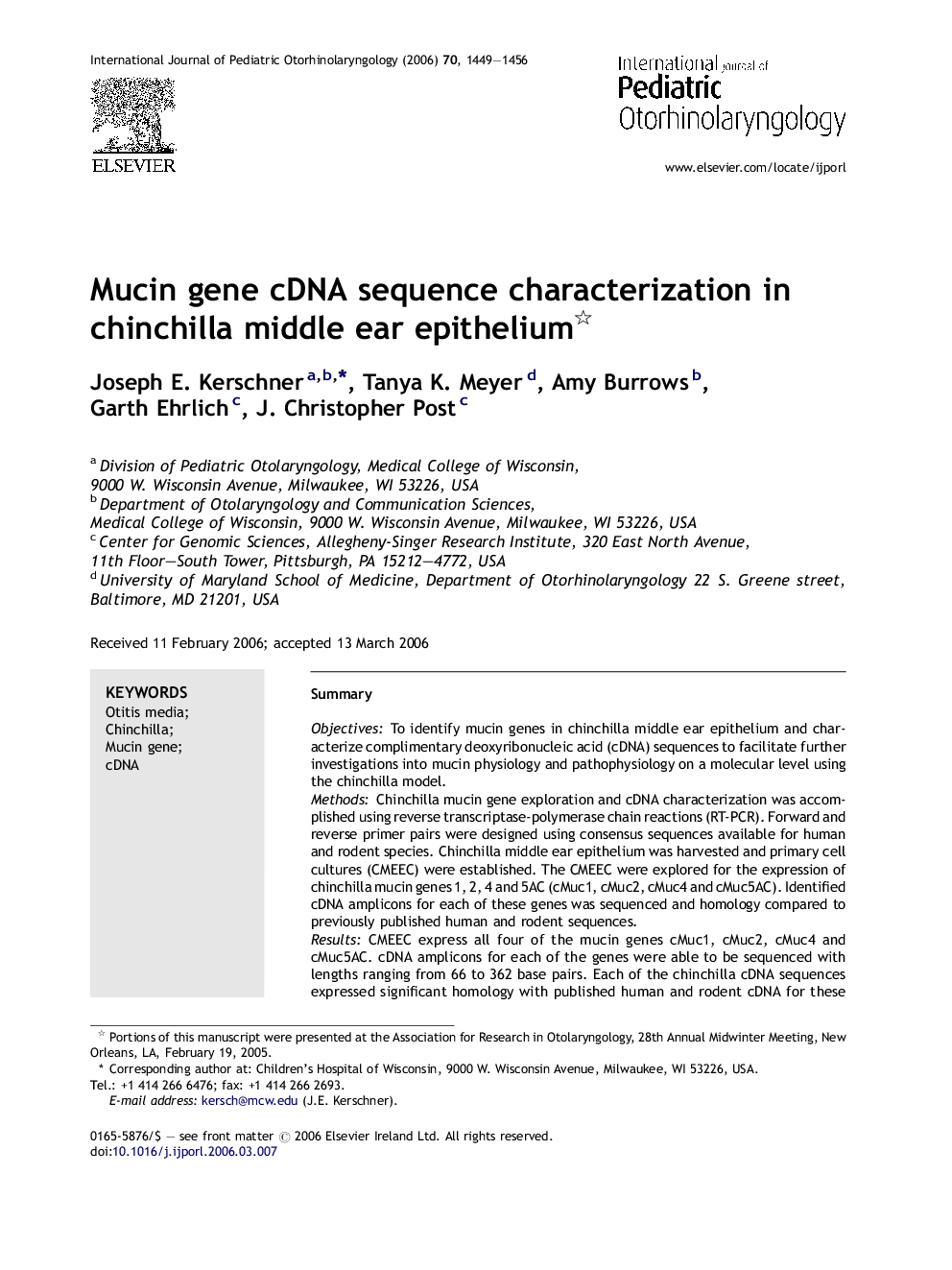| Article ID | Journal | Published Year | Pages | File Type |
|---|---|---|---|---|
| 4114966 | International Journal of Pediatric Otorhinolaryngology | 2006 | 8 Pages |
SummaryObjectivesTo identify mucin genes in chinchilla middle ear epithelium and characterize complimentary deoxyribonucleic acid (cDNA) sequences to facilitate further investigations into mucin physiology and pathophysiology on a molecular level using the chinchilla model.MethodsChinchilla mucin gene exploration and cDNA characterization was accomplished using reverse transcriptase-polymerase chain reactions (RT-PCR). Forward and reverse primer pairs were designed using consensus sequences available for human and rodent species. Chinchilla middle ear epithelium was harvested and primary cell cultures (CMEEC) were established. The CMEEC were explored for the expression of chinchilla mucin genes 1, 2, 4 and 5AC (cMuc1, cMuc2, cMuc4 and cMuc5AC). Identified cDNA amplicons for each of these genes was sequenced and homology compared to previously published human and rodent sequences.ResultsCMEEC express all four of the mucin genes cMuc1, cMuc2, cMuc4 and cMuc5AC. cDNA amplicons for each of the genes were able to be sequenced with lengths ranging from 66 to 362 base pairs. Each of the chinchilla cDNA sequences expressed significant homology with published human and rodent cDNA for these mucin genes. A cDNA sequence for the housekeeping gene, β-actin, was also identified.ConclusionsChinchilla middle ear epithelium grown in culture expresses the mucin genes 1, 2, 4 and 5AC, which have been identified as important in mucin regulation in the middle ear. cDNA sequences corresponding to these mucin genes were identified and may serve as important molecular tools in future studies of otitis media using the chinchilla model.
